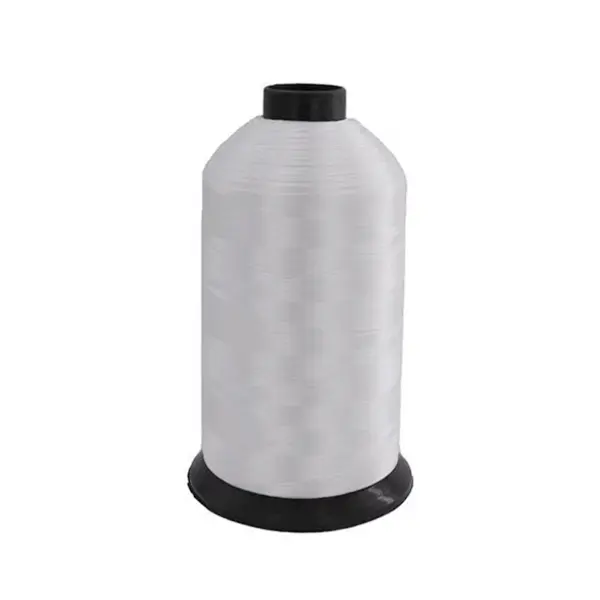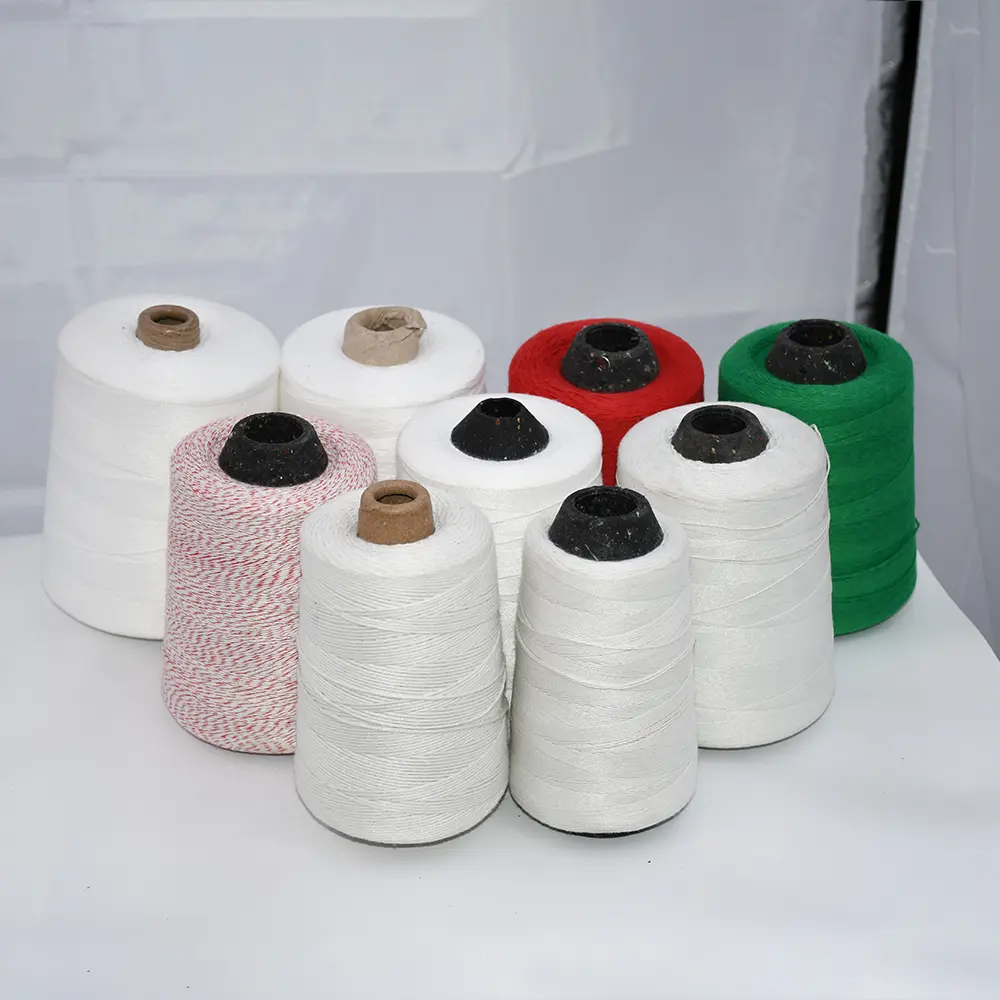Are you ready to dive into the world of polyester thread? This polyester thread buying guide is your ultimate resource, whether you’re a seasoned seamstress, a crafting enthusiast, or a professional in the textile industry. We’ll explore everything you need to know about polyester, from its diverse applications and characteristics to the best ways to select the right thread for your projects. This article is worth reading because it arms you with the knowledge to choose the perfect polyester thread for any task, ensuring your creations are beautiful and long-lasting.
What is Polyester Thread, and Why Is it So Popular?
Polyester thread is a synthetic thread made from polyester fibers. It’s a favorite among sewists and crafters for its strength, durability, and versatility. Unlike natural fibers like cotton, polyester is resistant to shrinking, fading, and wrinkling, making it an excellent choice for a wide range of applications. It’s perfect for both machine sewing and hand sewing.

This thread is known for its excellent color retention, meaning your stitches will stay vibrant wash after wash. The thread is also very strong, capable of withstanding significant tension without breaking. As a result, the thread is suitable for items that will undergo a lot of wear and tear. It’s a preferred choice for garments, upholstery, and outdoor gear. The wide range of polyester threads makes it ideal for many projects.
What are the Different Types of Polyester Thread?
There is a wide variety of polyester threads that are available for a wide range of applications. Understanding these types is crucial to making informed decisions.
- Spun Polyester Thread: This thread is made by spinning short polyester fibers together, similar to how cotton thread is made. It offers a soft, flexible feel, and is an excellent all-purpose thread for garments and general sewing.
- Filament Polyester Thread: This thread is made from continuous polyester filaments, giving it exceptional strength and sheen. It’s often used for heavier-duty applications, such as upholstery, belts, and industrial sewing.
- Texturized Polyester Thread: This thread has a textured surface, offering great elasticity and cover. It is perfect for seams and fabrics that require stretch, as well as for serging, where the seam is made with an overlock stitch.
- Trilobal Polyester Thread: Trilobal polyester has a unique, three-sided shape that gives it a brilliant luster and shine. It’s often used for embroidery and decorative stitching where a beautiful appearance is desired. You can use trilobal polyester to create eye-catching designs.

The thread used for sewing can vary from project to project, depending on the required characteristics. The different kinds of different treatments and finishes give them completely different uses and appearances, which impact the use.
What are the Main Uses of Polyester Thread?
The thread is an incredibly versatile material, perfect for a broad range of projects. Here’s a look at some of its most common applications:
- Garment Construction: The thread is a workhorse in the clothing industry. It’s used to sew everything from delicate seams on lightweight fabrics to sturdy construction on denim and outerwear.
- Upholstery: Given its strength and resistance to wear, the thread is ideal for upholstery projects, from creating cushions to reupholstering furniture.
- Quilting: Polyester can be used for both piecing and quilting. Polyester is a good alternative to cotton because of its strength and because it will not shrink when washed. It’s also great for machine quilting because it doesn’t leave lint behind.
- Embroidery: The shine and durability of polyester make it an excellent choice for embroidery, adding intricate designs to textiles.
- Outdoor Gear: Because of its resistance to the elements, the thread is commonly used in the production of tents, sails, and outdoor equipment.
- Construction: Heavy duty thread is very useful for heavy-duty purposes, such as construction.
If you need to know more, check out our Plumb bob/Plumbnet product page.
How to Choose the Right Polyester Thread for Your Project?
Choosing the right polyester thread can significantly affect the outcome of your project. Here’s a guide to help you make the best decision:
- Weight/Thickness: Consider the weight of the fabric. A lightweight thread is ideal for delicate fabrics, while a heavy duty thread is needed for heavy materials like denim or canvas.
- Color: Match the thread color to your fabric. A close match will make the stitches blend seamlessly, while a contrasting color can be used for decorative effects.
- Fiber Type: Choose the right thread based on your project’s requirements. Spun polyester is a good all-purpose choice, while filament polyester is better for durability.
- Finish: The finish of the thread can affect its appearance. Matte finish threads provide a subtle look, while trilobal polyester offers a shiny, lustrous finish.
- Specific Application: Some polyester threads are specially designed for particular uses, such as embroidery or upholstery.
What Factors Influence the Quality of Polyester Thread?
The quality of the thread can impact the aesthetics and durability of your projects. Here are some key factors to consider:
- Fiber Quality: The quality of the polyester fibers used in the thread is paramount. High-quality fibers result in a stronger, smoother, and more consistent thread.
- Twist and Tension: The twist of the thread affects its strength and how well it handles. Proper tension during manufacturing ensures the thread is strong and doesn’t break easily during stitching.
- Dyeing Process: A well-controlled dyeing process ensures consistent color throughout the thread and resistance to fading and bleeding.
- Finishing: The finishing processes applied to the thread can improve its performance. Finishes can add luster, reduce friction, and make the thread easier to sew with.
- Consistency: Thread should be consistent in its weight, thickness, and appearance throughout the spool. Inconsistencies can lead to problems during stitching.
How Does Polyester Thread Compare to Other Thread Materials?
It’s helpful to understand how polyester thread stacks up against other common thread materials:
- Polyester vs. Cotton: The thread is stronger, more durable, and more resistant to shrinking and fading than cotton. Cotton, on the other hand, is breathable and can absorb dye better.
- Polyester vs. Nylon: Polyester generally has better UV resistance than nylon, making it a better choice for outdoor applications. Nylon tends to have more elasticity.
- Polyester vs. Silk: Silk is a luxurious natural fiber with a beautiful drape, but it’s generally more delicate and expensive than polyester.
- Polyester vs. Linen: Linen is a strong and durable natural fiber with a beautiful texture. However, it can be more prone to wrinkling than polyester.
Different material properties give them completely different uses and appearances.
What are the Benefits of Using Polyester Thread for Sewing?
The thread offers a number of benefits that make it a favorite among sewists:
- Durability: It is incredibly strong and can withstand significant wear and tear, making it ideal for items that need to last.
- Colorfastness: The thread retains its color well, resisting fading and bleeding. This is particularly beneficial for projects that will be washed frequently.
- Resistance to Shrinking: The thread doesn’t shrink when washed, ensuring that your stitches remain consistent and your projects keep their intended shape.
- Versatility: The thread can be used for a wide variety of projects, from garments to upholstery and outdoor gear.
- Ease of Use: It is easy to sew with and handles well on both home sewing machines and industrial equipment.
How to Care for and Store Polyester Thread
Proper care and storage are crucial to maintaining the quality and longevity of your polyester thread:
- Storage: Store your thread in a cool, dry place away from direct sunlight. This protects the thread from UV damage and color fading.
- Organization: Keep your thread organized by color and type. This makes it easier to find the thread you need for each project.
- Protect from Dust: Keep your thread spools covered or stored in a container to protect them from dust and debris.
- Avoid Extreme Temperatures: Do not store thread in areas with extreme temperatures, as this can affect its properties.
Where to Buy Polyester Thread: A Polyester Thread Buying Guide
You can find polyester thread at a variety of locations:
- Local Craft Stores: These stores often have a good selection of polyester thread in various colors and weights.
- Online Retailers: Online stores offer a vast selection of polyester thread, often at competitive prices. Look for retailers specializing in textile supplies.
- Wholesale Suppliers: If you use thread in large quantities, consider purchasing from a wholesale supplier. This can save you money in the long run.
- Specialty Stores: Some stores specialize in wonderfil specialty threads, offering unique types and colors of polyester thread.
For all your B2B needs, check out our products at Jinyuent: 100% spun polyester yarn raw white in hanks.
Tips and Tricks for Sewing with Polyester Thread
Here are some helpful tips and tricks for working with the thread:
- Use the Correct Needle: Choose a needle size that’s appropriate for the weight of your thread and fabric. A universal needle is a good choice for general sewing.
- Adjust Tension: Make sure your machine’s tension is correctly adjusted for the thread you’re using. Incorrect tension can lead to stitches that are too loose or too tight.
- Use the Right Stitch: Choose the appropriate stitch for your project. A straight stitch is suitable for most seams, while a zigzag stitch is useful for finishing edges.
- Test on Scrap Fabric: Before sewing on your main project, test your stitches on a piece of scrap fabric to ensure the tension and stitch type are correct.
- Consider Color: When sewing, select a color thread that complements your project’s aesthetics.
Polyester thread is truly a remarkable material that has transformed the thread industry. From crafting to construction, the thread is a versatile and durable option for a multitude of projects. By considering the many types, qualities, and applications outlined in this guide, you can make the best choices and ensure your projects look stunning and last for years.
Bullet Point Summary
- Polyester thread is a synthetic thread known for its strength, durability, and versatility.
- The various types of thread include spun polyester, filament polyester, texturized polyester, and trilobal polyester, each with unique characteristics.
- Polyester thread is ideal for garment construction, upholstery, quilting, embroidery, and outdoor gear.
- Choose the right thread by considering its weight, color, fiber type, and finish.
- High-quality polyester thread is made with premium fibers, proper twist and tension, and a consistent dyeing process.
- Polyester thread offers advantages over cotton, nylon, and silk in terms of durability, colorfastness, and resistance to shrinking.
- Store your thread in a cool, dry place and keep it organized.
- Use the correct needle size and adjust your machine’s tension for the best results.





